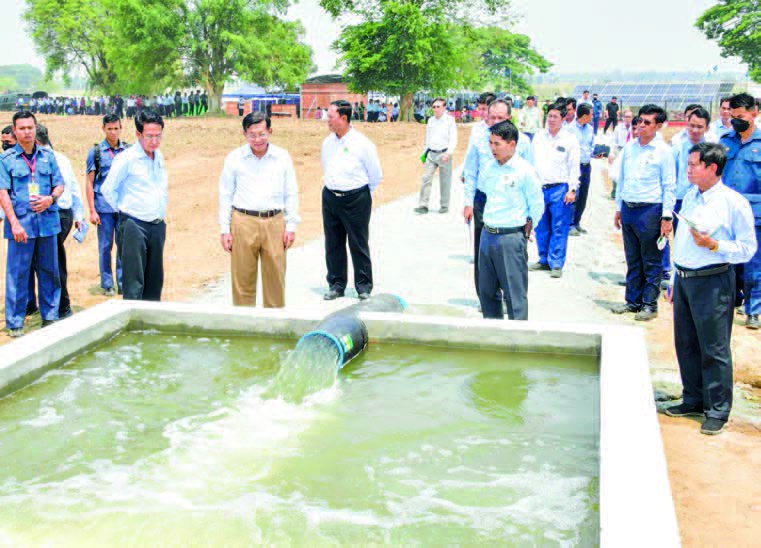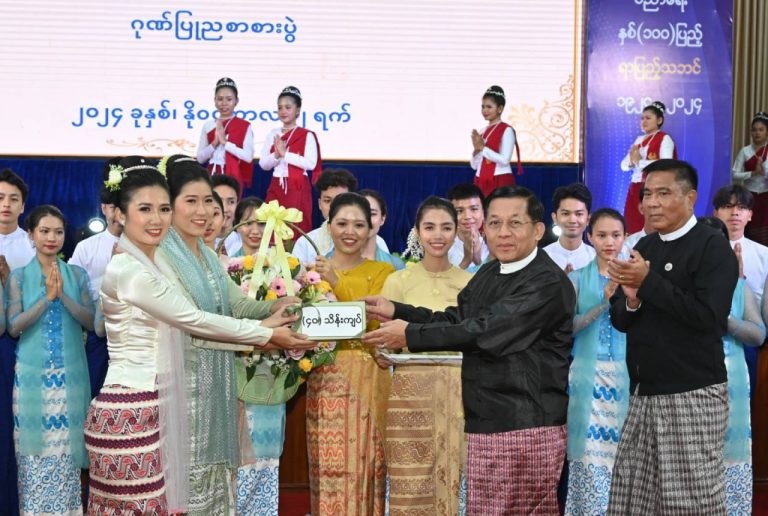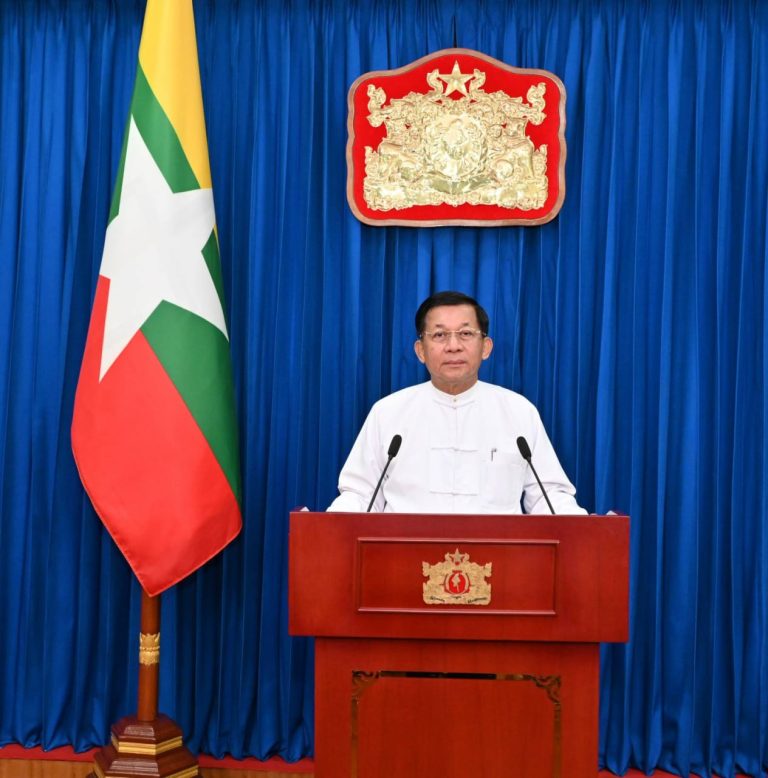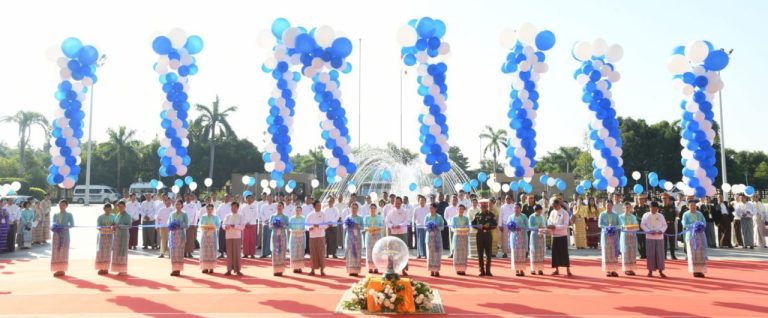
MT News
Chairman of the State Administration Council Prime Minister Senior General Min Aung Hlaing inspected temporary damming process on Hsinthe Creek and solar-powered water pumping system in Shadaw Village of Tatkon Township in Nay Pyi Taw Council.
Director General of Irrigation and Water Utilization Management Department of the Ministry of Agriculture, Livestock and Irrigation reported on construction of the temporary dam on Hsinthe Creek and supply of water through solar-powered water pumping system, and efforts for providing agricultural water by building dams with solar-powered water pumping stations across the nation.
Speaking on the occasion, the Senior General said that as there are lesser number of rainy days in Nay Pyi Taw, inflow of water volume to the dams is lesser. This being so, local people wastes use of water.
specially, the best ways are being sought for efficient supply of water in summer. There are three kinds of water—water from rivers and creeks, rainwater and damming water. It is necessary to carefully use water. It is necessary to raise public awareness on utilization of water trough TV programmes and other ways. If water is used in dropping and pipeline systems, water can be used efficiently. So, arrangements are being made to teach use of water at institutes of agriculture.
Agricultural tasks require water in summer. Water can be taken from rivers and creeks, dams and underground water. If water pumping process can be done through solar-powered system in summer, it can much reduce fuel consumption. Hence, relevant ministries are assigned to implement such a plan. Myanmar is making efforts for building solar plants and generating electricity from solar power.
As applying solar power in water pumping process contributes to cultivation of crops in double cropping pattern, it can develop agriculture sector. Profits from the agricultural sector will obtain costs for using solar system. Temporary dams can be built on creeks and drains for pumping water.
After that, the Senior General and the members visited and inspected the systematic development of 79.88 acres of agricultural land in Gway Pin (model) village.



